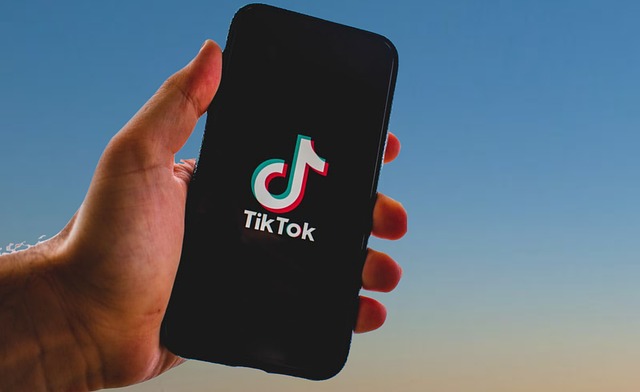TikTok vs. YouTube Shorts vs. Instagram Reels: Where to Focus in 2026
Navigating the short-form video landscape? We dissect TikTok, YouTube Shorts, and Instagram Reels to help you choose the best platform for your 2026 strategy. Find out where your audience truly is!
Table of Contents
Introduction
The short-form video market is booming, with TikTok, YouTube Shorts, and Instagram Reels vying for your attention (and your audience's). But in 2026, where should you concentrate your efforts? This isn't just about choosing the platform with the most users; it’s about aligning your content, audience, and goals for maximum impact. This article will help you navigate this rapidly evolving landscape and make informed decisions about where to focus your energy.
Understanding Your Audience Reach
Before diving into specific platforms, ask yourself: Where is your target audience spending their time? Each platform boasts a unique demographic. TikTok leans heavily towards Gen Z and younger millennials, known for its viral trends and creative content. YouTube Shorts, benefiting from YouTube's massive user base, attracts a broader audience, spanning various age groups and interests. Instagram Reels, integrated within the Instagram ecosystem, attracts a slightly older demographic than TikTok, with a focus on lifestyle, fashion, and beauty.
Understanding this crucial difference is key. If your target market is Gen Z, then prioritizing TikTok is likely a smarter move. However, if you're aiming for a broader reach across multiple age groups, a diversified strategy across platforms might be necessary. Remember, knowing your audience is paramount to success. Conduct thorough market research using tools like Google Trends and social media analytics to understand the platform preferences of your ideal customer.
Crafting Your Content Strategy
The type of content that thrives on each platform differs significantly. TikTok values creativity, virality, and quick-paced edits. YouTube Shorts, while similar, often favors longer videos with more in-depth explanations or tutorials. Instagram Reels often lend themselves to visually appealing content that aligns with the existing Instagram aesthetic.
- TikTok Focus: Short, punchy videos, trending audio, engaging challenges.
- YouTube Shorts Focus: Slightly longer videos, how-to's, educational content, leveraging YouTube's established audience.
- Instagram Reels Focus: Visually stunning content, lifestyle content, seamless integration with your Instagram feed.
Your content strategy should be tailored to each platform's unique strengths. A "one-size-fits-all" approach rarely succeeds in the competitive short-form video arena.
Decoding the Algorithms
Each platform has its own algorithm, which dictates how your content is shown to users. Understanding these intricacies is crucial for maximizing reach. TikTok's algorithm prioritizes engagement metrics like watch time, shares, and comments. YouTube Shorts leverages YouTube's broader algorithm, considering factors such as watch time, audience retention, and click-through rates. Instagram Reels integrates with Instagram's algorithm, emphasizing engagement, relevance to user interests, and your overall account activity.
The key takeaway? Create content that encourages high engagement. Interact with your viewers, respond to comments, and participate in relevant trends to boost your visibility. Regularly analyze your video performance metrics to understand what's working and what's not. Many experts, such as those at Hubspot, stress the importance of consistent, high-quality content in relation to algorithm success.
Monetization Strategies
Monetization options vary across platforms. TikTok offers its Creator Fund, brand deals, and affiliate marketing. YouTube Shorts allows for monetization through the YouTube Partner Program, but eligibility requirements are stringent. Instagram Reels offers similar monetization options to TikTok, focusing largely on brand collaborations and influencer marketing.
Your choice of platform will influence your monetization strategy. If brand deals are your primary focus, Instagram and TikTok often present more opportunities than YouTube Shorts. For a more diversified approach, YouTube Shorts, through its integration with the YouTube ecosystem, might be a stronger option in the long run. Consider carefully which aligns with your specific business objectives.
Staying Ahead of Trends
The short-form video landscape is constantly evolving. Staying updated on the latest trends and challenges is essential. Use relevant hashtag research tools and social listening techniques to identify emerging trends on each platform. Tools such as Google Trends, Exploding Topics, and even simply browsing the "For You" page on each platform will help you keep your finger on the pulse of what's popular.
Cross-Platform Promotion Tactics
While focusing on one platform initially might seem efficient, consider the value of cross-promotion. Sharing your short-form videos across multiple platforms can expand your reach and expose your content to a wider audience. Remember to tailor your content slightly to the specific platform audience to optimize performance.
Measuring Your Success
Defining success is platform-specific. TikTok focuses on virality, YouTube Shorts on watch time, and Instagram Reels on engagement. Regularly track relevant metrics such as views, likes, comments, shares, and click-through rates. Use the analytics dashboards offered by each platform to gain insights into your audience behavior. Analyzing data will help refine your strategy and identify areas for improvement.
Future Predictions for Short-Form Video
Predicting the future is always tricky, but the trend toward personalized experiences and increased use of AI is likely to continue shaping the short-form video landscape. Expect further algorithm sophistication, improved monetization options, and potentially even more platform consolidation or integration. Staying adaptable and informed will be critical for navigating the ever-changing environment.
Conclusion
Choosing the right platform for your short-form video strategy in 2026 requires careful consideration of your audience, content style, and business goals. TikTok, YouTube Shorts, and Instagram Reels each offer unique advantages and disadvantages. By understanding these nuances and tailoring your approach accordingly, you can maximize your chances of success. Remember, understanding your audience is key to success in this competitive landscape and TikTok vs. YouTube Shorts vs. Instagram Reels is a continuous evolution.
